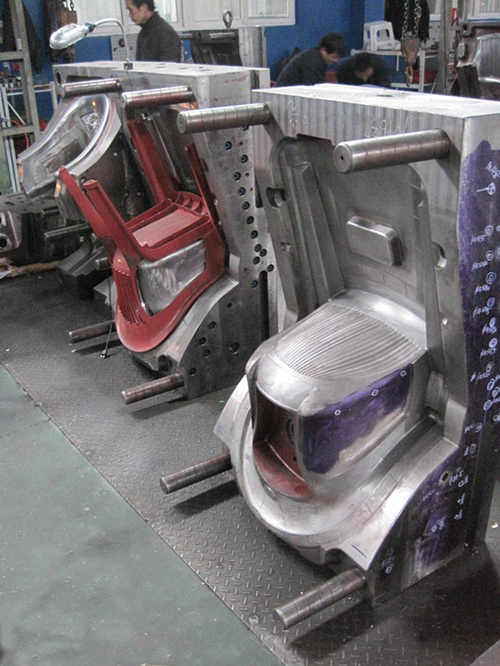Mould temperature controllers and chillers
Mould temperature controllers and chillers

It is not always desirable to cool moulds
from the general supply,because it may not be running at the ideal temperature for the
material being moulded. Neither is it
good practice to throttle back the supply of coolant through the mould in order to achieve the required temperature,
because of the danger of getting hot spots in the mould- Less than maximum cooling efficiency also results from this
practice. Mould temperature controllers working in con¬junction with the main cooling system provide the best solution.
Two main types of mould temperature
controller are available: the simplest system has a tank, connected through a
ball valve,to the water supply. In the tank
is a thermostatted water heater and a copper cooling coil connected on the
inlet side to the water supply and on the outlet side through a solenoid valve
(controlled by a thermostat) to the drain or return pipe of the cooling system.
The water from the tank is circulated to the mould,using a
small pump. If the water becomes too hot,the valve on the
cooling circuit opens and the water in
the tank cools to the required level. A similar arrangement can be adapted for oil or glycol circulation,but in this
case the tank is not filled from the
mains.
In the other system,water from
the mains passes into a heating chamber and is circulated by a pump to the
mould. If the water becomes too hot, a solenoid valve on the outlet side allows
the hot water to flow out of the drain and
cold water flows in from the mains to take its place.
For some moulding jobs,mould chilling is employed and chiller units having refrigerated heat exchangers are used. They are fairly expensive and costly to run and, if mould cooling channels have been properly designed and are adequate in size,they should not be necessary.
The pipework connecting chiller units
to moulds should be insulated because the temperature of the coolant is likely
to be well below the dew-point of the atmosphere and will cause condensation.
Glycol or methanol/glycol anti-freeze solutions are
added if the temperature is to be allowed to fall below the freezing
point of water.
Knowing
the shot weight,the cycle time,and the enthalpy of the plastic material,flow of
coolant required can be estimated by assuming that half the total heat of the
material will be removed in the mould. Sufficient
coolant flow to allow a temperature rise of not more than 5°C or 9°F will then
be needed.
This Mould temperature controllers and chillers has been adopted by China chair mould maker-Topworks plastic mold company,a dedicate plastic mold company
Post Your Ad Here
Comments